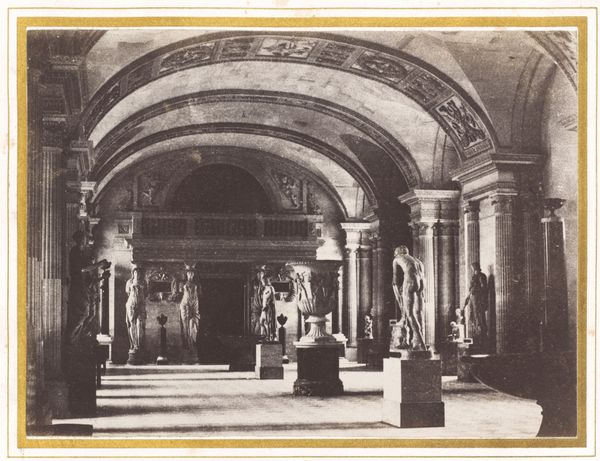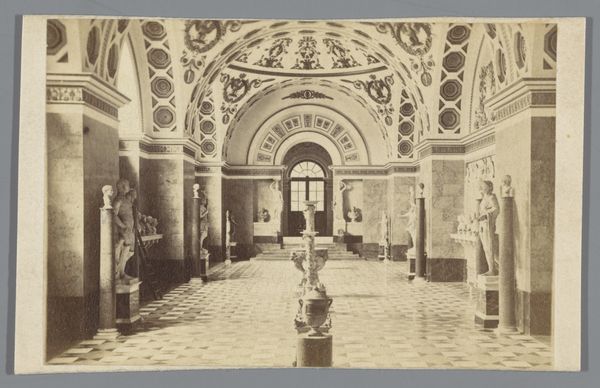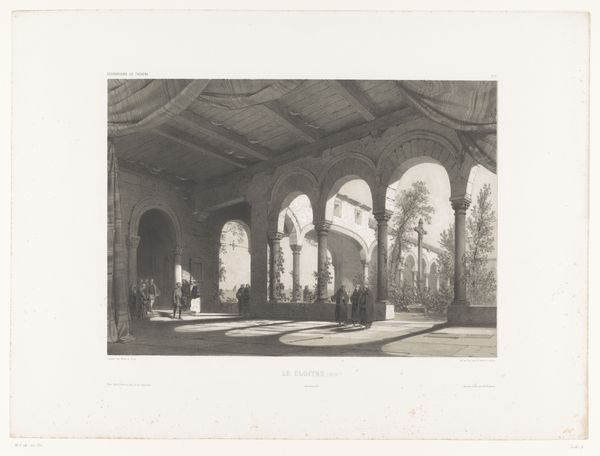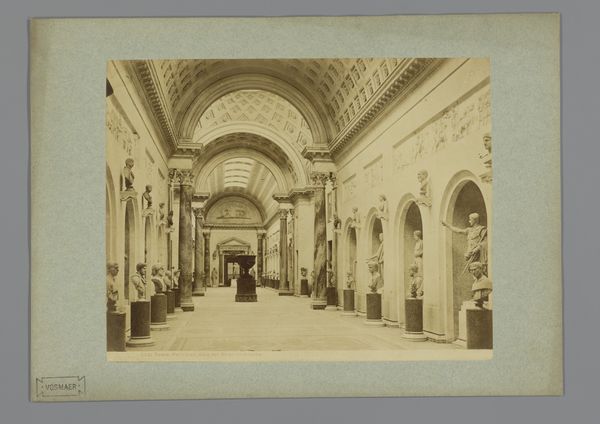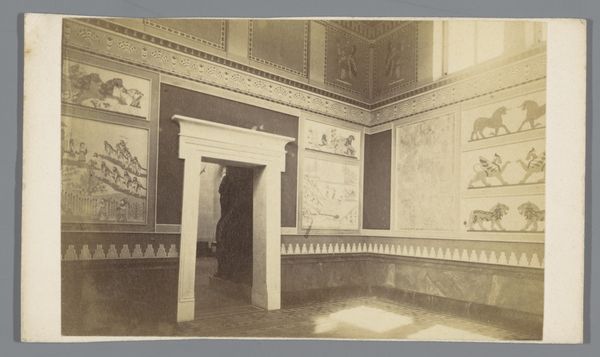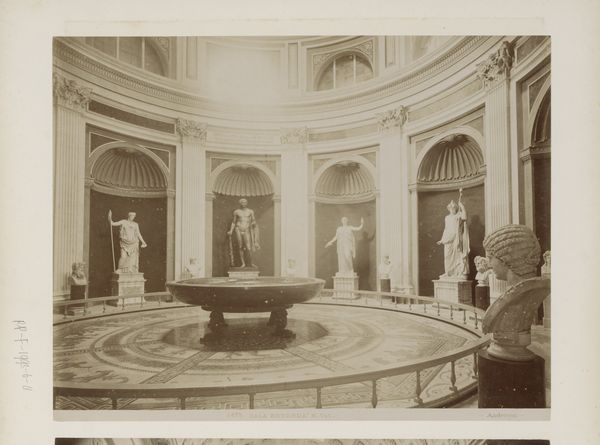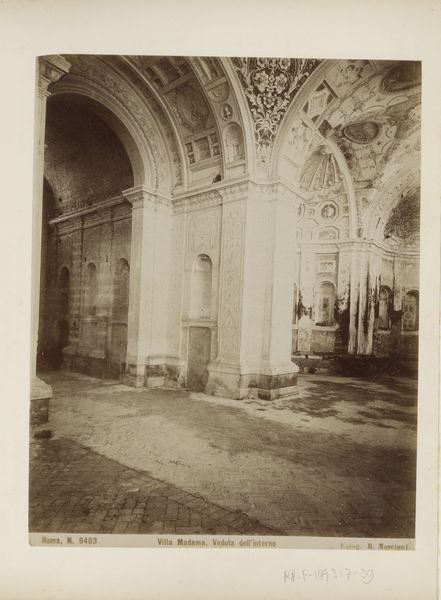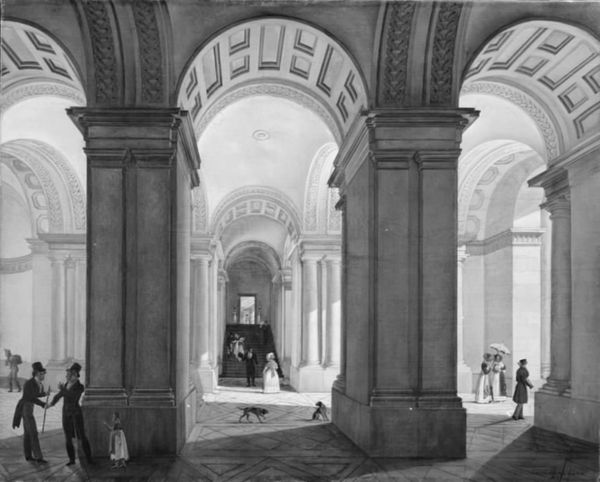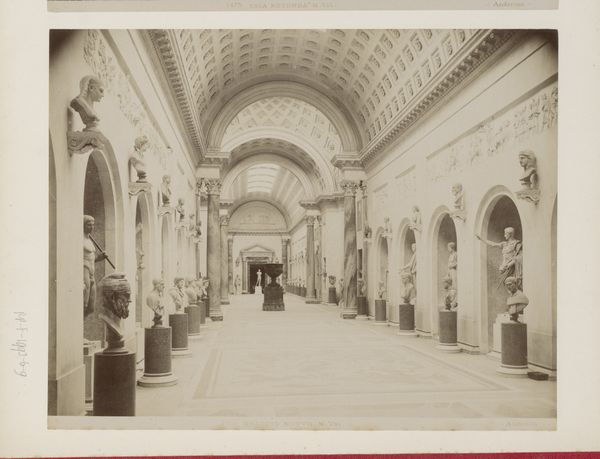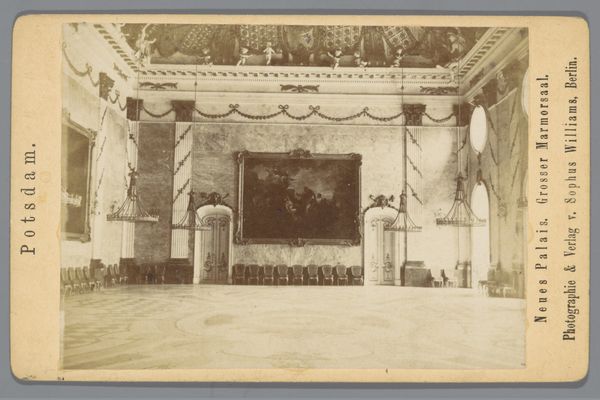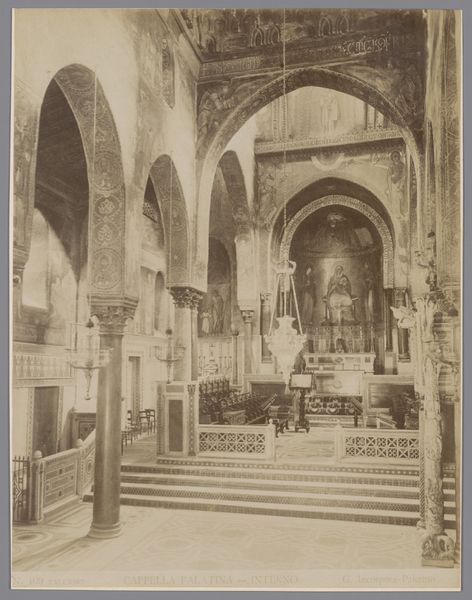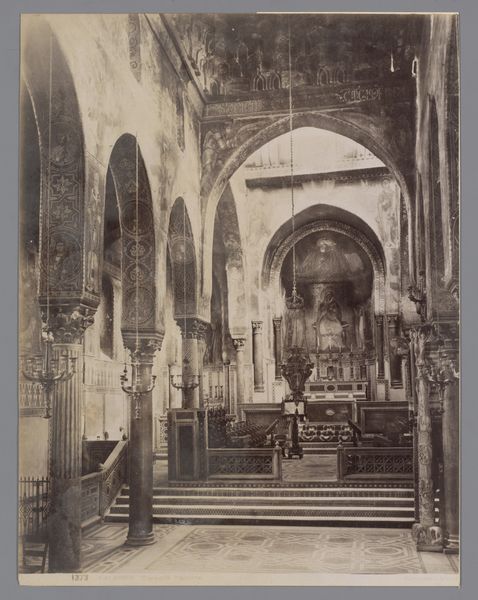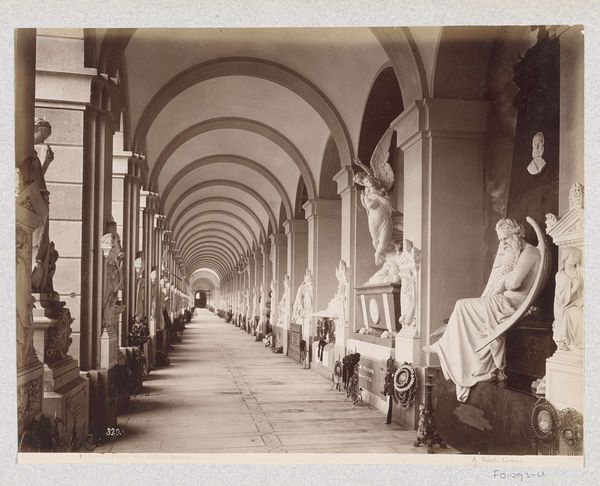
photography, albumen-print, architecture
#
neoclacissism
#
statue
#
landscape
#
classical-realism
#
historic architecture
#
traditional architecture
#
photography
#
19th century
#
history-painting
#
albumen-print
#
architecture
#
historical building
#
statue
Dimensions: image: 23.5 x 19.6 cm (9 1/4 x 7 11/16 in.) mount: 39.3 x 29.3 cm (15 1/2 x 11 9/16 in.) overall: 55.9 x 45.7 cm (22 x 18 in.)
Copyright: National Gallery of Art: CC0 1.0
Editor: Here we have "Salon of the Caryatides, Louvre," an albumen print photograph taken around 1851 by Fortuné Joseph Petiot-Groffier. The repetition of the arches and statues creates this impressive illusion of depth. How would you interpret this work? Curator: I see a dialogue between permanence and transience, Editor. Consider the caryatids themselves – architectural supports sculpted in the image of women. What do they symbolize? Editor: Strength? Endurance? Curator: Precisely. But they're also idealized representations of feminine forms, cultural constructions loaded with meaning. Now consider photography, a new medium in 1851. Isn't it fascinating how Petiot-Groffier chose to capture this space of ancient symbols using such modern means? Editor: So the photograph itself becomes part of the story? Curator: Indeed. This Salon isn't just a physical space, it's a repository of cultural memory, echoed in the symbols adorning the arches above the statues. The photograph freezes that moment, preserving and reinterpreting the weight of history through a specific cultural lens. Does the neutral tone lend it an antique quality? Editor: Absolutely, it feels almost like looking at an ancient artifact. Curator: Petiot-Groffier wasn't just documenting; he was actively engaging with the historical weight embedded in the Louvre. Consider this: is the rise of photography and photographic documentation linked to that time of colonialism? Does it seek to "freeze" the past? Editor: I hadn't considered that angle before! It really enriches the picture. Curator: Every symbol tells a story, Editor. And every new medium rewrites it. It is our task to unravel such cross-pollination, to examine how it affects not only art but also collective understanding.
Comments
No comments
Be the first to comment and join the conversation on the ultimate creative platform.
